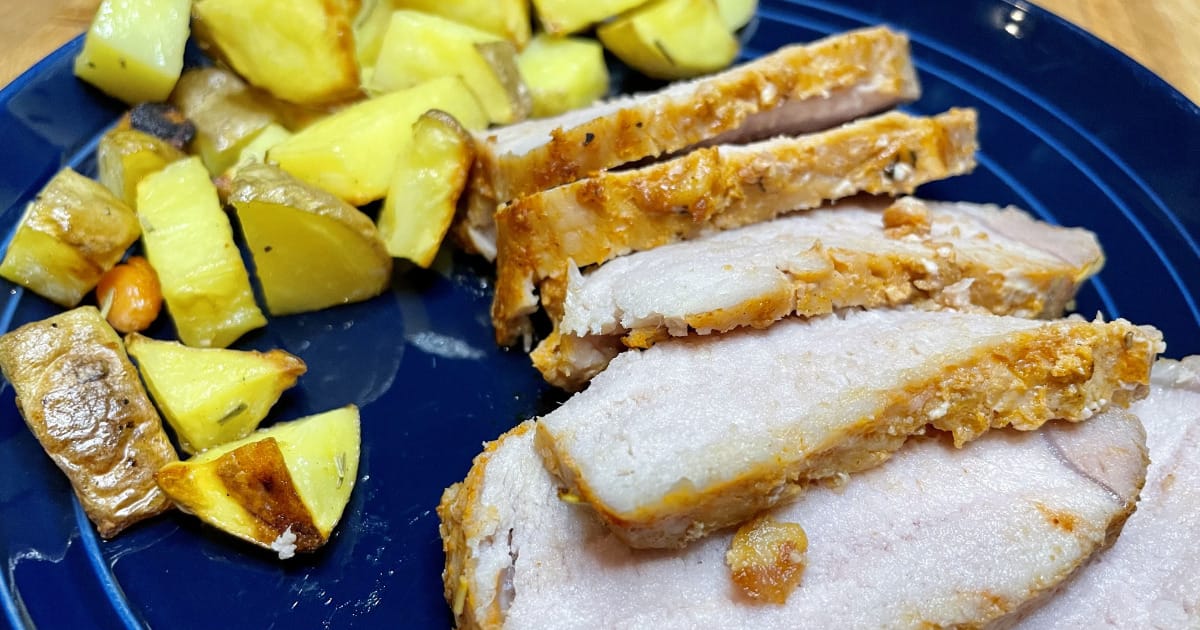A Smithfield fresh pork tenderloin is American Heart Association certified, super easy to prepare, and very flavorful. You can find these marinated, healthy cuts of meat in 2-lb to 3.5-lb sizes at your local grocery store or Walmart. Add in a few vegetables and you have a simple, but satisfying meal for an entire family.
How to cook smithfield pork tenderloin
The easiest way to cook a Smithfield pork tenderloin is to unwrap the tenderloin, place it on a baking sheet, and bake it in a heated oven until the meat’s internal temperature reaches 145°F or 63°F. Because these tenderloins are marinated in the packaging, you don’t need to do nything for flavor. This is a truly protein that easy enough for even the most timid chefs to prepare without fail.
So, you can do this! Even if you have no experience baking a pork tenderloin. Simply follow the steps and tips outlined below and your dinner crowd will be raving about the dish you’ve prepared.
1. Read the label
Pork tenderloin is generally a healthy cut of meat. With about 4.5g of fat per 100g, pork tenderloin is leaner than chicken breast, for example.
Still, Smithfield pork tenderloins are marinated, which adds sugar and salt — and potentially fat and cholesterol too. For example, Smithfield’s maple-bacon pork tenderloin has these facts on its nutrition label:
- 55mg of cholesterol per serving
- 9g of total fat per serving
- 510mg of sodium per serving
- Cane sugar and sea salts as the top two ingredients in the rub
So this pork tenderloin isn’t quite as healthy as you might expect. That’s why it’s wise to double-check food labels, particularly if you have food sensitivities.
If you already have the tenderloin on hand, you can take steps to make it healthier. Here are two ideas:
- The added sodium and fat come from the marinade. Using paper towels, pat away some of the marinade.
- Choose low-fat, low-sodium side dishes. The recipe below recommends roasted vegetables with a tiny bit of oil and seasoning.
2. Know your target temperature
According to the USDA, pork is safe to eat when it reaches 145°F or 63°F and it has rested for at least 3 minutes before carving. Note that this is a relatively new guideline. Prior to 2012, the USDA had advised home chefs to cook pork to a temperature of 160°F or 71°C.
3. Have a thermometer
Be sure you have a good, reliable meat thermometer on hand. This one is popular on Amazon. Guessing on the temperature isn’t a good idea, because most people will err on the side of caution — and that could leave you with a very dry tenderloin.
4. Sear before cooking, or not
Searing the meat before you roast it adds flavor. Some argue that searing first also locks in the juices, though this topic is hotly debated. Others wearing by searing meat after it’s cooked. You can do what feels right, or not sear it at all.
I skip the searing when I’m feeling rushed, as it’s one less pan to clean afterwards. I did not sear the maple-bacon pork tenderloin I made recently, because I didn’t want to lose the bacon pieces in my pan. It still turned out amazing.
5. Make it a meal with vegetables
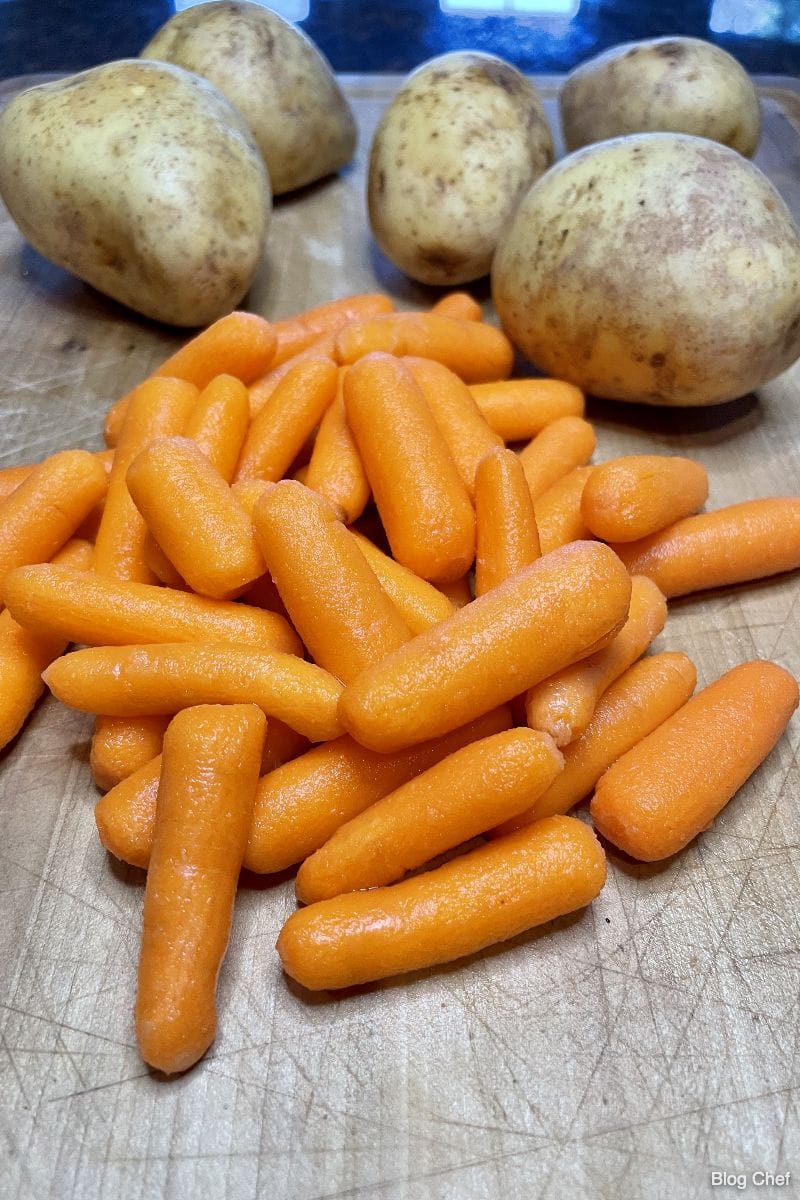
A simple mix of sturdy vegetables like potatoes and carrots can turn your pork tenderloin into a sheet pan dinner. You could also use Brussels sprouts, onions, and asparagus if those suit your fancy.
This doesn’t add to much work, either. While your oven is heating to 425°F (218°C), chop veggies into 1-inch cubes. The pieces need to be small enough to cook sufficiently at that temperature in 30 minutes.
Next, cover a baking sheet with foil. Place the veggies on the prepared baking sheet. Add 1 tablespoon of olive oil plus a few grinds of salt and pepper. Or, use any salt-free seasoning of your choice. Using your hands, massage the oil and seasonings into the veggies.
6. Bake the tenderloin on a rack
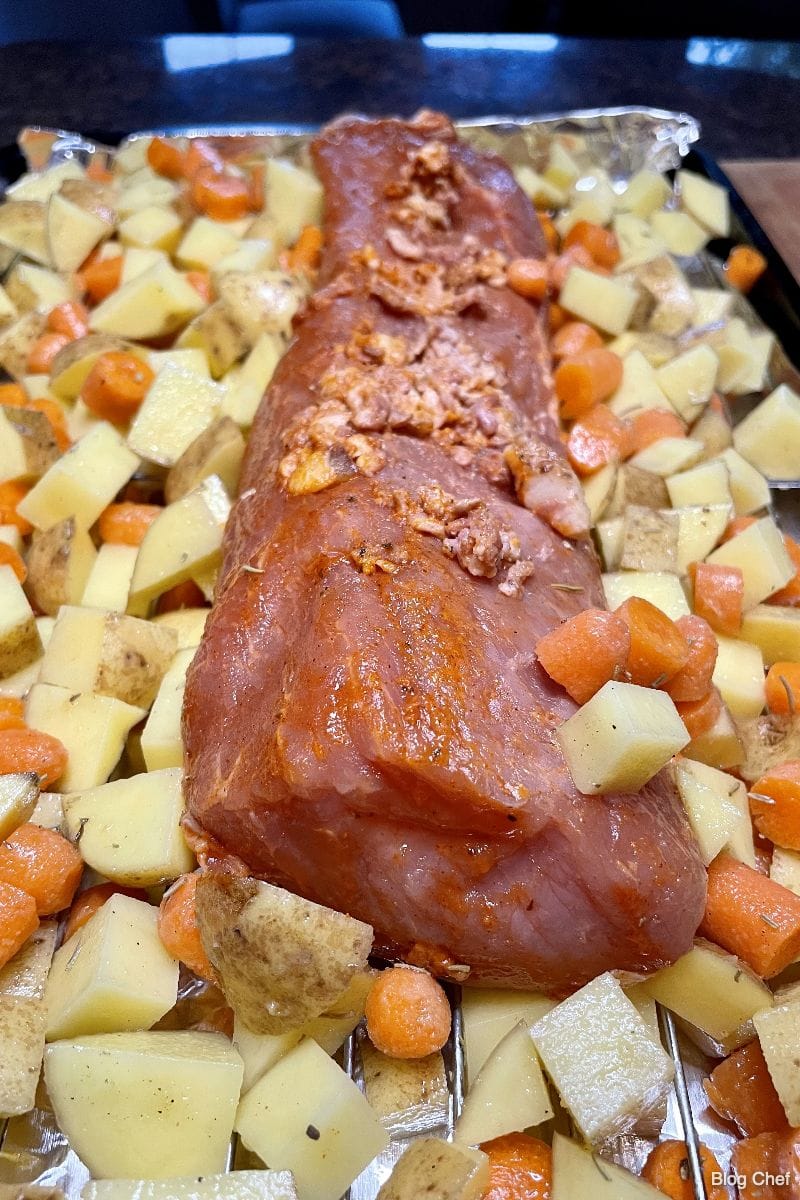
You can place a small rack atop the vegetables, then add the pork tenderloin on the rack. If you don’t have a rack, no worries. The vegetables should keep the pork elevated enough for even cooking.
7. Check temp, rest, and serve
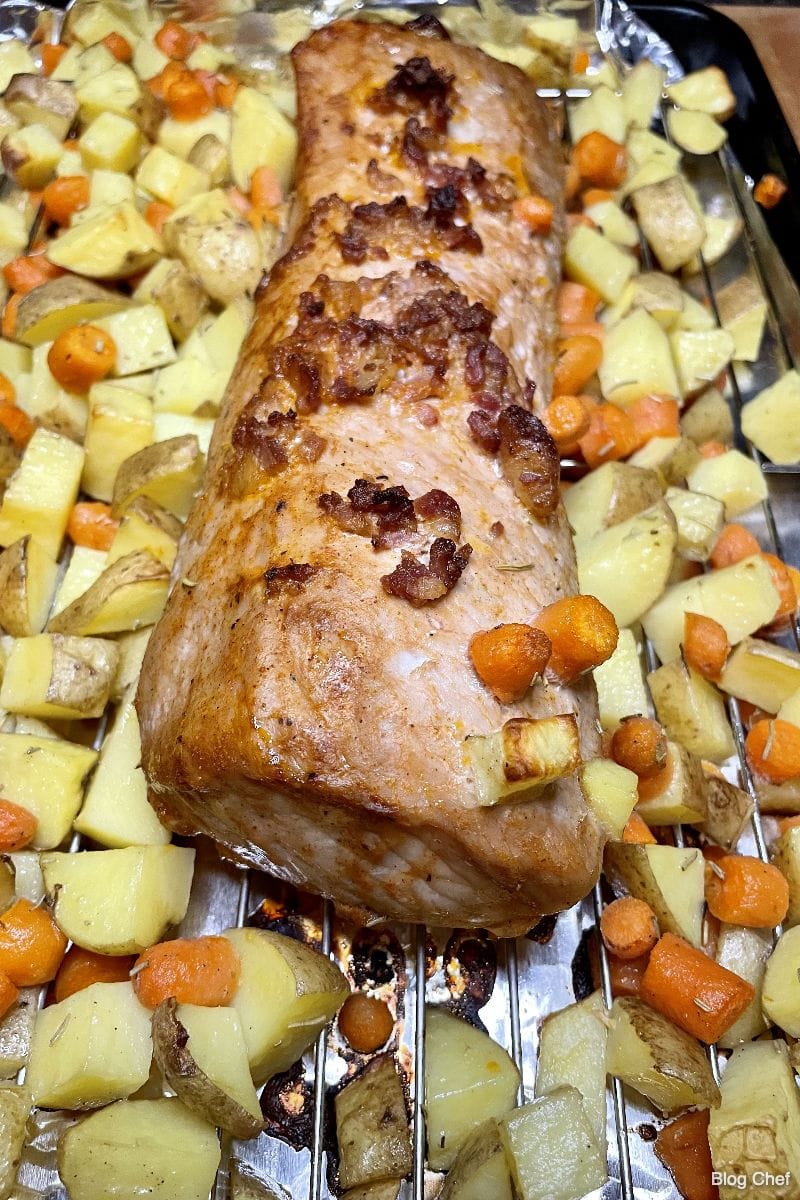
Now, the only thing for you do to is wait. After 30 minutes, use your meat thermometer to check the temperature. Jab a fork in the veggies, too, to make sure they’re done. If they’re not, but the meat is, remove the tenderloin and let it rest until the veggies are cooked to your liking.
At a minimum, plan on resting the meat for 3 minutes or more — 10 minutes is ideal.
After the meat has rested, slice it and serve with the roasted vegetables.
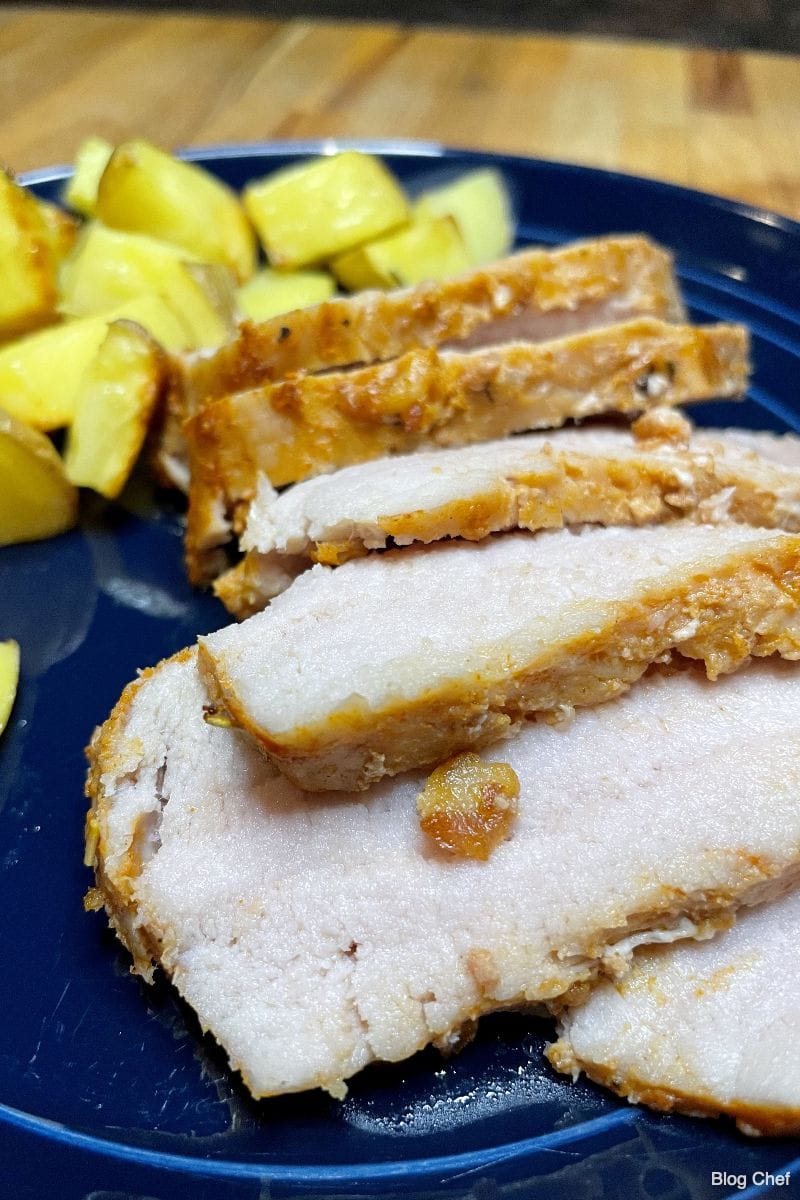
Other ways to cook smithfield pork tenderloin
1. Bake lower and slower
You can also bake a Smithfield pork tenderloin at the lower heat of 375°F (191°C). This will take longer, of course. For a 3-lb tenderloin, plan for 40 to 45 minutes. Confirm doneness with a meat thermometer.
2. Slice and broil
If you’re short on time, you can slice the tenderloin and cook it under the broiler or on the barbecue. This will take just a few minutes, but it depends on how thickly you cut those slices. Again, rely on the meat thermometer to guide you.
Easy Sheet Pan Pork Tenderloin Dinner
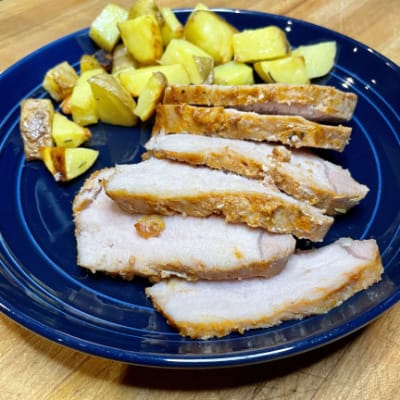
This easy, sheet-pan dinner comes together quickly, thanks to a marinated Smithfield pork tenderloin and some vegetables.
Ingredients
- 1 3-lb marinated Smithfield pork tenderloin
- 1.5 cups of white potatoes, washed and cut into 1-inch cubes
- 1.5 cups of carrots, cut into 1-inch pieces
- 1 tablespoon of olive oil
- 1 teaspoon salt
- ½ teaspoon black pepper
Instructions
- Preheat the oven to 425°F (218°C) and line a large baking sheet pan with foil.
- Chop carrots and potatoes into 1-inch pieces. Add them to the prepared baking sheet.
- Sprinkle the vegetables with 1 tablespoon of olive, plus 1 teaspoon salt and 1/2 teaspoon black pepper. Mix with your hands.
- Place a roasting rack on the sheet if you have one. Remove the pork tenderloin from its packaging and place it on the rack.
- Place the sheet in the oven and bake for 30 minutes, or until the internal temperature of the meat reaches 145°F or 63°C and the vegetables are tender.
- Let the meat rest for 10 minutes. Slice and serve.
Nutrition Information:
Yield:
6Serving Size:
1Amount Per Serving: Calories: 406Total Fat: 11gSaturated Fat: 3gTrans Fat: 0gUnsaturated Fat: 7gCholesterol: 166mgSodium: 509mgCarbohydrates: 12gFiber: 2gSugar: 2gProtein: 60g
Nutrition information isn’t always accurate.
More pork tenderloin recipes to try
You may be hooked on pork tenderloin after following this recipe. Sorry about that! Fortunately, I have some other pork tenderloin recipes to try:
